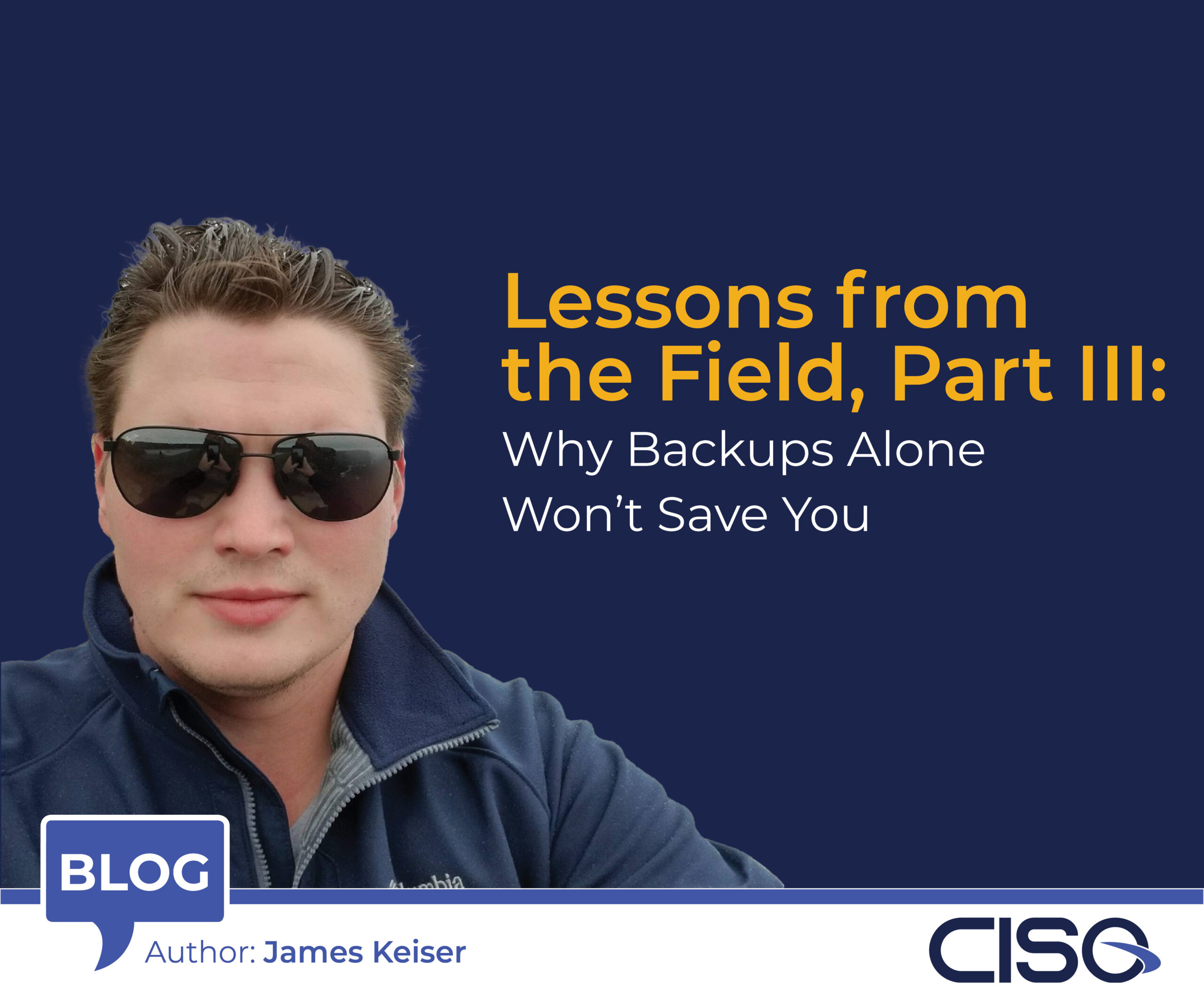
文章强调了备份在数据保护中的重要性,但也指出仅靠备份无法完全保障安全。作者指出备份需结合安全措施、定期测试和恢复计划才能有效应对威胁。文章还建议企业采用多层次的安全策略,包括零信任、网络隔离和多因素认证等措施,以提升整体网络安全水平。 2025-3-11 18:59:5 Author: securityboulevard.com(查看原文) 阅读量:2 收藏
James Keiser, Director of Secured Managed Services Southeast, CISO Global, Inc.

It’s been a while since I’ve put some thoughts together for the CISO Blog, and with World Backup Day coming at the end of this month, the timing felt right. I’ve mentioned in the past that backups are crucial to keeping your data preserved and safe. But a backup is only as good as your ability to recover it—and that depends on security, testing, and a solid response plan.
World Backup Day is March 31st, but at CISO Global, we’re celebrating all month long. Why? Because backups are one of the most critical pieces of IT security—and yet, most organizations don’t have a backup strategy that actually protects them when disaster strikes.
The truth is, backups are your last line of defense, not your first.
I’ve seen too many businesses assume that because they have backups, they’re protected. Then, when an attack happens, they realize:
- The backups were stored on the same network as the attack.
- The backups were deleted or encrypted before anyone noticed.
- The recovery process takes days or weeks—not hours.
- No one ever tested restoring from backup, and now it’s failing.
At CISO Global, we’ve helped businesses recover from ransomware, data corruption, and infrastructure failures. And we’ve seen the difference between companies that bounce back quickly and those that struggle for weeks.
The key? A backup strategy that is built into a larger cybersecurity and recovery plan.
Backups: Your Safety Net, Not Your Security Plan
Backups are essential, but they aren’t enough. A true resilience strategy includes layers of protection to make sure you’re not relying on backups alone.
Here’s what a strong backup strategy looks like:
1. Immutable, Offsite, and Verified Backups
Backups must be protected from attackers. Otherwise, they’ll be compromised in the same attack.
- Immutable storage ensures backups can’t be changed or deleted.
- Offsite backups guarantee that even if your network is breached, your data is safe.
- Regular testing proves that your backups actually work when you need them.
Take action: Ask your IT team when your last full restore test was completed. If they hesitate, that’s a problem.
2. Zero Trust: Don’t Let Attackers Walk Right In
Many breaches succeed because attackers move laterally through a network without resistance. If backups are accessible from the main network, they will be deleted.
- Enforce least privilege access—only give access to those who need it.
- Segment your network so that backups are isolated from production systems.
- Use multi-factor authentication (MFA) to protect backup access.
Take action: Review who has access to your backups. If attackers breach an admin account, can they delete everything?
3. Ransomware Resilience: The Recovery Factor
A ransomware attack is not the time to find out your backups don’t work. Organizations need a tested plan for:
- Rapid recovery—how fast can you restore systems?
- Data integrity checks—are backups clean or infected?
- Incident response coordination—who does what when disaster strikes?
Even if you have cyber insurance, payouts aren’t guaranteed unless you can prove strong security measures.
Take action: Simulate a ransomware recovery drill with your team. Don’t assume your plan will work—test it.
4. Cyber Hygiene: The First Line of Defense
The strongest backup strategy is one you never have to use because your security prevents the attack in the first place. That means:
- Regular patching to close vulnerabilities.
- Multi-factor authentication on all critical accounts.
- User security awareness training to prevent phishing and credential theft.
Even the best backups can’t fix a breach if an attacker still has access to your network.
Take action: Conduct a cybersecurity risk assessment. Are there gaps that attackers could exploit?
5. Incident Response and Business Continuity
Backups are just one part of a bigger picture. Without a full incident response and continuity plan, even the best backups won’t be enough. Businesses need to:
- Define roles and responsibilities before an attack happens.
- Test response plans with tabletop exercises.
- Ensure regulatory compliance for data retention and recovery.
A well-prepared organization doesn’t just have backups—it knows exactly how to use them in an emergency.
Take action: When was the last time your leadership team walked through a disaster recovery drill? If you don’t have a process in place, it’s time to start one.
Resilience is More Than Just Backups
This World Backup Day, don’t just check a box. Check your entire strategy.
A backup is only as good as your ability to recover it—and that depends on security, testing, and a solid response plan.
At CISO Global, we help businesses build real resilience—from bulletproof backup strategies to incident response plans that work when it matters most. Whether you need help:
- Testing your backup recovery
- Hardening your incident response plan
- Implementing Zero Trust security
We’re here to help.
Want to make sure your business is ready for the next cyber threat? Let’s have a conversation!

About the Author
James Keiser is the Director of Secured Managed Services (SMS), the MSP division of CISO Global. James has been in the MSP/MSSP arena for the majority of his professional career (15+ Years). If you’re familiar with MSP/MSSP firms they require the ability to adapt, overcome, learn quickly, and build partnerships with clients of all types, challenges and skills.
The post Lessons from the Field, Part III: Why Backups Alone Won’t Save You appeared first on CISO Global.
*** This is a Security Bloggers Network syndicated blog from CISO Global authored by hmeyers. Read the original post at: https://www.ciso.inc/blog-posts/lessons-from-the-field-part-iii/
如有侵权请联系:admin#unsafe.sh

